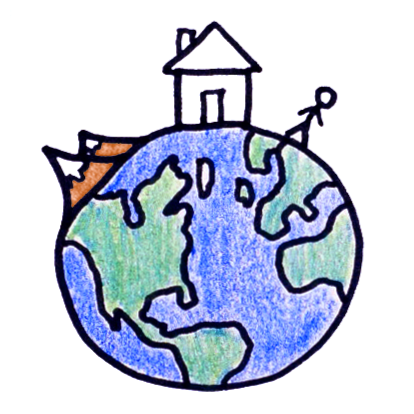2023-10-13
[public] 63.1K views, 20.4K likes, dislikes audio only
This Product is supported by the NASA Heliophysics Education Activation Team (NASA HEAT), part of NASA’s Science Activation portfolio.
The material contained in this document is based upon work supported by a National Aeronautics And Space Administration (NASA) grant or cooperative agreement. Any questions, findings, conclusions or recommendations expressed in this materials are those of the author and do not necessarily reflect the views of NASA.
Because eclipses are powerful and frightening events, ancient cultures went to great lengths to understand eclipses, leading to remarkably accurate predictions and helping invent the science of astronomy.
LEARN MORE
**************
To learn more about this topic, start your googling with these keywords:
- Saros: a period of about 18 years between repetitions of solar and lunar eclipses.
If you liked this week’s video, you might also like:
The Five Millenium Canon of Solar Eclipses - https://eclipse.gsfc.nasa.gov/SEpubs/5MCSE.html
CREDITS
*********
Cameron Duke | Script Writer, Narrator and Director
Sarah Berman | Illustration, Video Editing and Animation
Nathaniel Schroeder | Music
MinuteEarth is produced by Neptune Studios LLC
OTHER CREDITS
*****************
Stonehenge Midsummer Sunrise 2013
Photo by: Flickr user Stonehenge Stone Circle
https://www.flickr.com/photos/stonehenge-stone-circle/8980676956/
Bamboo Annals: double dawn
Liu, Liu, and Ma, 2003, Journal of Astronomical History and Heritage (ISSN 1440-2807), Vol. 6, No. 1, p. 53 - 63, Figure 2. Bamboo Annals: double dawn.
https://articles.adsabs.harvard.edu//full/2003JAHH....6...53L/0000060.000.html
Cuneiform tablet: ephemeris of eclipses
https://www.metmuseum.org/art/collection/search/321969
Seleucid ca. 4th–2nd century BCE / Met Museum
Eclipse Predictions by Fred Espenak and Jean Meeus (NASA's GSFC)
Five Millennium Canon of Lunar Eclipses
Saros series (via NASA)
Adapted from a Map illustration by Michael Zeiler
Paths of totality from eclipse calculator by Xavier Jubier
Eclipse predictions by Fred Espenak, NASA Goddard Space Flight Center
Many Saros Series
Adapted from: https://eclipse.gsfc.nasa.gov/SEatlas/SEatlas3/SEatlas2041.GIF
Credit: Eclipse Predictions by Fred Espenak, NASA GSFC Emeritus.
OUR STAFF
************
Lizah van der Aart • Sarah Berman • Cameron Duke
Arcadi Garcia i Rius • David Goldenberg • Melissa Hayes
Alex Reich • Henry Reich • Peter Reich
Ever Salazar • Leonardo Souza • Kate Yoshida
OUR LINKS
************
Youtube | https://youtube.com/MinuteEarth
TikTok | https://tiktok.com/@minuteearth
Twitter | https://twitter.com/MinuteEarth
Instagram | https://instagram.com/minute_earth
Facebook | https://facebook.com/Minuteearth
Website | https://minuteearth.com
Apple Podcasts| https://podcasts.apple.com/us/podcast/minuteearth/id649211176
REFERENCES
**************
Brown, Daniel. “Blood Moon: Lunar Eclipse Myths from around the World.” The Conversation, theconversation.com/blood-moon-lunar-eclipse-myths-from-around-the-world-100548
Carman, Christián C., and James Evans. “On the Epoch of the Antikythera Mechanism and Its Eclipse Predictor.” Archive for History of Exact Sciences, vol. 68, no. 6, Nov. 2014, pp. 693–774, https://doi.org/10.1007/s00407-014-0145-5
COLTON, R., and R. L. MARTIN. “Eclipse Cycles and Eclipses at Stonehenge.” Nature, vol. 213, no. 5075, Feb. 1967, pp. 476–478, https://doi.org/10.1038/213476a0
de Jong, T., and W. H. van Soldt. “The Earliest Known Solar Eclipse Record Redated.” Nature, vol. 338, no. 6212, Mar. 1989, pp. 238–240, https://doi.org/10.1038/338238a0
Espenak, Fred. “NASA - Eclipses and the Saros.” Eclipse.gsfc.nasa.gov, eclipse.gsfc.nasa.gov/SEsaros/SEsaros.html
Espenak, Fred, and Jean Meeus. Five Millennium Canon of Lunar Eclipses. 7 Aug. 2021.
Five Millennium Canon of Solar Eclipses. 30 July 2021.
HAWKINS, GERALD S. “Stonehenge: A Neolithic Computer.” Nature, vol. 202, no. 4939, June 1964, pp. 1258–1261, https://doi.org/10.1038/2021258a0
Hermann Hunger, and David Pingree. Astral Sciences in Mesopotamia. Leiden ; Boston, Brill, 1999.
HOYLE, FRED. “Stonehenge–an Eclipse Predictor.” Nature, vol. 211, no. 5048, July 1966, pp. 454–456, www.nature.com/articles/211454a0.pdf, https://doi.org/10.1038/211454a0
Liu, C., et al. “Examination of Early Chinese Records of Solar Eclipses.” Journal of Astronomical History and Heritage, vol. 6, no. 1, 2003, pp. 53–63, adsabs.harvard.edu/full/2003JAHH....6...53L
“NASA - Sun-Earth Day - Technology through Time - Babylon”. sunearthday.nasa.gov/2006/locations/babylon.php.
Rubio, Gonzalo. “How Eclipses Were Regarded as Omens in the Ancient World.” The Conversation, theconversation.com/how-eclipses-were-regarded-as-omens-in-the-ancient-world-81248
Tsu, Wen Shion. “A Statistical Survey of Solar Eclipses in Chinese History.” Popular Astronomy, vol. 42, no. 136, 1934, adsabs.harvard.edu/full/1934PA.....42..136T
https://patreon.com/minuteearth
/youtube/video/m69_zJTfmbs

